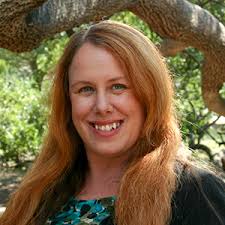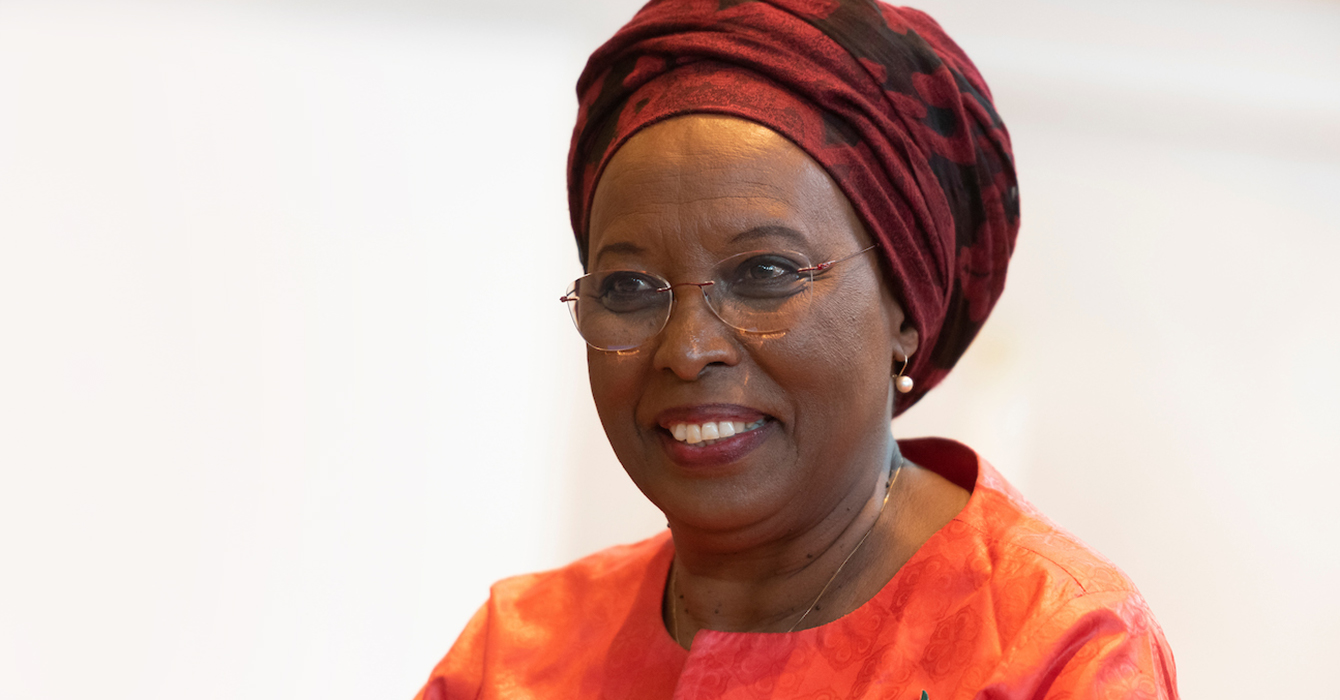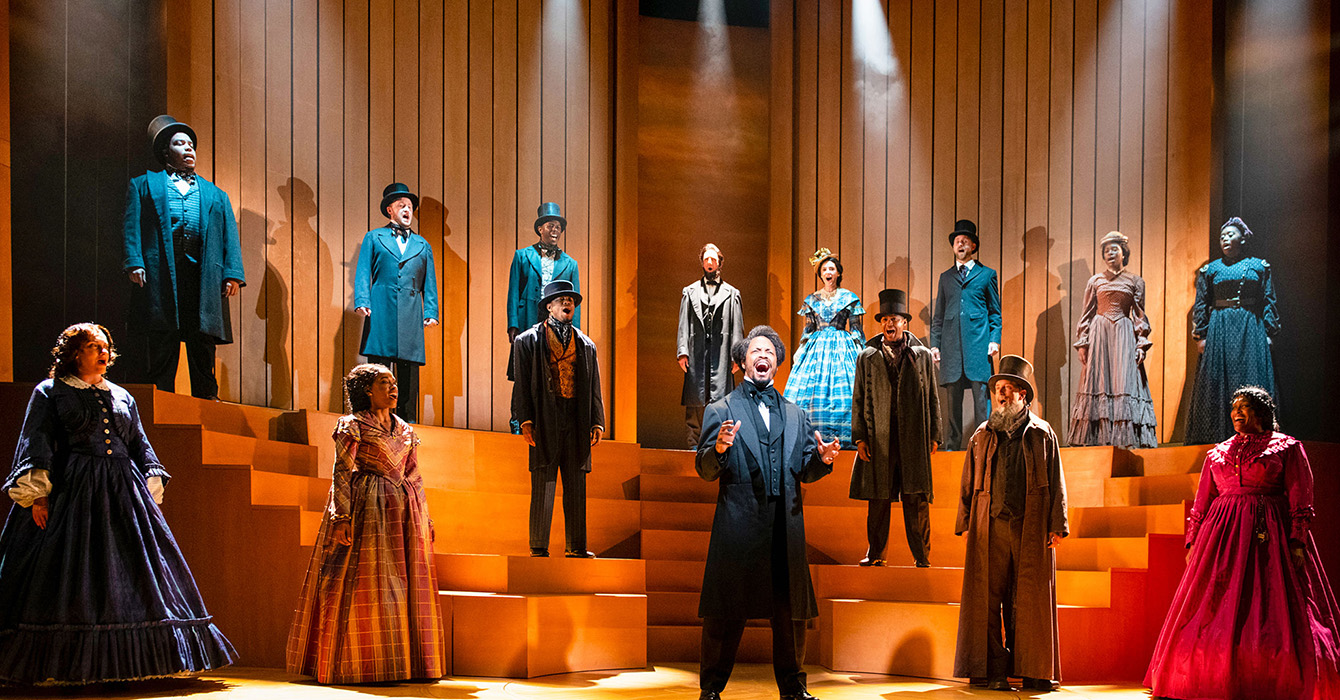Update: The Rev. Efrem Smith is now co-pastor of Bayside Church Midtown campus in Sacramento, California.
To say that the Rev. Efrem Smith thinks outside the box isn’t entirely accurate. He doesn’t recognize the box in the first place. Not that others haven’t pointed it out to him, or even tried to put him in one from time to time. But he isn’t having any part of it.
It was an outlook he got early in life. Growing up in an integrated neighborhood in Minneapolis in the 1970s, he questioned why people gathered in segregated worship services on Sunday mornings.
“It was weird to me to go to school all week and experience racial diversity, but then on Sunday to be faced with the option of having to choose between black or white,” he said. “This didn’t seem right to me.”
And it still doesn’t, which is why he is focused on building multicultural ministries, a term he uses in the broadest sense, said Curtiss DeYoung, a professor of reconciliation studies at Bethel University in Minnesota, who has known Smith for more than 20 years.
“While most people think of diversity in terms of race, he sees it as a spectrum that includes everything from economic disparity to gender issues,” DeYoung said.
Smith has discovered that music is a great way to bring people together. Over the years, he has used a variety of genres, including jazz and gospel. But these days, he’s best known as the founder of The Sanctuary Covenant Church in Minneapolis. Or, as it is commonly called, the Hip-Hop Church.
“When we planted Sanctuary Covenant Church, I wanted it to reach across races and ethnicities. I wanted it to be urban and suburban. And I thought that the hip-hop subculture offered a way to do that,” he said.
Why should churches embrace hip-hop culture?
Hip-hop is a music genre and a culture that came out of New York City in the 1970s. The music is similar to rap music but vastly different in purpose, its fans maintain.
Questions to consider
Questions to consider:
- Hip-hop is a natural way for Smith to reach the younger generation, but that approach is not for everyone. How might you authentically engage a youth subculture?
- Smith drew on his college experiences to create a diverse and inclusive community. What experiences have you had in your journey of leadership that you could draw upon to lead your institution to greater faithfulness?
- Smith’s metaphor of “mosaic” offers a compelling picture of what the church should be. What metaphor could you use to help others imagine your institution’s faithful future?
- In his transition from parish-based leadership to regional denominational leadership, Smith has found ways to keep his ministry passions alive. How have you done that? Could you do more?
“A lot of rap is degrading, especially to women,” Smith said. “The original principles of hip-hop are peace, love, community, unity and having fun.”
To non-aficionados, the differences between rap and hip-hop might not be obvious, said Iomos Marad, a hip-hop professional who often performs at church services in Minneapolis. He prefers to be called an emcee rather than a rapper. “A rapper doesn’t care what he talks about,” he explained. “An emcee is somebody who speaks to the condition of the community.”
Smith is not alone in his appreciation of the religious potential of hip-hop. Emmett G. Price III, chairman of the Department of African-American Studies and an associate professor of music at Northeastern University in Boston, marvels at the genre’s impact and reach.
“Hip-hop is one of the most important cultural phenomena in the late 20th and now 21st century,” he said. “The simple fact that it has permeated all four corners of the globe and has attracted the attention and passion of youth, young adults and now middle-aged adults of all races, ethnicities, hues and belief systems reveals only a glimpse of its potential.”
Price said that churches that turn their backs on hip-hop are making it that much harder on themselves to attract and retain younger worshippers.
“The irony of the relationship [between] the church and hip-hop is that in many churches nationwide the missing demographic are young people ages 15 to 45, the very population enamored with hip-hop culture,” he said. “The church should not be afraid of hip-hop culture; it should engage it just as it should engage any and every youth subculture, from emo to grunge to punk to goth to neo-soul and beyond. These are our young people -- all of them.”
Eric Gutierrez, author of “Disciples of the Street: The Promise of a Hip Hop Church,” believes that the potential of hip-hop goes beyond just being a recruiting tool. In the right hands -- or mouths -- it can be a powerful evangelical device.
He compares Christian hip-hop to “what the apostle Paul was doing in his epistles, tailoring his voice to each culture and the environment and issues they faced.”
“The use of hip-hop as an evangelical tool is similar to the guitar masses of the ’60s and Christian rock of the ’80s,” he said. “But there is a vital distinction: Hip-hop is an identity and a culture before it is a musical genre. That is central to why hip-hop is so powerful in outreach.”
He continued: “The use of hip-hop beats and other cultural signifiers in religious services amounts to more than just contemporary praise music. It achieves the level of a genuine church movement.”
The approach has worked at The Sanctuary Covenant Church. It was launched with about two dozen people on Super Bowl Sunday in 2003. The timing wasn’t a coincidence. Smith and his wife, Donecia, invited the people to a late-afternoon gathering in their home with the promise that a Super Bowl party would follow.
Today, the church has a membership of about 260 but draws an average of nearly four times that to its Sunday morning services. The congregation is about 55 percent white, 35 percent black and 10 percent other minorities, mostly Latino and Asian. (In the most recent demographic statistics from the census bureau, those numbers for Minneapolis as a whole were 65, 18 and 17 percent, respectively.)
The congregation also tends to skew toward young adults, with 45 percent of the members between the ages of 19 and 33. Its website proclaims: “We’re probably not your mama’s church experience.” And it goes on to describe a typical service: “It’s loud. It’s casual. It’s high energy.”
Only two of those three labels apply to Smith. His energy appears to be boundless, especially when he leaps -- literally -- to his feet to preach. And casual? He can slide from a profound examination of theological theory into a playful self-deprecatory joke so fast that you can hardly keep up.
But loud, he most definitely is not. If anything, he tends to be more on the soft-spoken side. When it comes to motivating people, he’d rather do it with rational reasoning than by screaming at them.
“My leadership style is one of leading by vision-casting and through inspiration that mainly comes out of my preaching and teaching,” he said.
Embracing reconciliation and the multicultural mosaic in the West
Now he’s taking his vision to a much wider audience. Six months ago Smith left his church in Minneapolis to become superintendent of the Pacific Southwest Conference of the Evangelical Covenant Church, a vast area that includes Arizona, California, Hawaii, Nevada and Utah.
Besides uprooting his family -- including daughters Jaeda, 13, and Mireya, 11 -- and making them move 2,000 miles from their friends, Smith's biggest hurdle in taking the West Coast position was his concern that he’d miss being a pulpit pastor.
“I love preaching, and I knew that would be hard to give up,” he said. “But, as it has turned out, in this job I get to preach about two Sundays a month. In fact, I just preached five Sundays in a row, each in a different church. So that hasn’t been an issue.”
The job also puts his passion front and center. While officially it involves “providing support and training of all kinds” for the member churches, his focus is on increasing the diversity of the congregations. In a letter sent to the churches announcing his appointment, Will Davidson, chairman of the conference’s executive board, noted that Smith’s “personal and ministry commitment to God’s mosaic is unwavering.”
“Mosaic” is one of Smith’s favorite expressions. The analogy to designs made from collections of different-colored glass or tiles fits perfectly with his vision of a church filled with different-colored faces. He often referred to his Minneapolis church as a “mosaic church,” and one of the first things he did in his new position on the West Coast was to take part in the Journey to Mosaic bus tours, in which he rounds up a group of ministers, loads them on a bus, and takes them on an “experiential bus trip” to learn about people and neighborhoods they’d otherwise likely never see.
“I want white pastors talking with black pastors and black pastors talking with Hispanic pastors and so on,” Smith said. “Anytime you can get people engaging with different people, you can start creating authentic relationships across race.”
Smith, 41, has been building such relationships since he was 18.
“I enrolled in St. John’s University,” a private liberal arts school in central Minnesota, he said. “When I got to campus, I discovered that out of 3,600 students, I was one of only seven blacks in the entire school.”
He immediately started filing paperwork, hoping to transfer at the end of the first semester.
“I had already been accepted at a historically black college, Hampton College, when I had a conversation with my dad,” he said. “He said something that was very interesting. He said, ‘Maybe what you are going through is preparing you for what you’re going to do in the future.’ He turned out to be right.”
Instead of fleeing to a different school, Smith decided to stay and see if he could make a difference there. He was a performing arts major and helped put on gospel concerts, joined a group that sponsored African-American movie nights and started writing a weekly column in the school newspaper.
“I decided to take a leadership role in helping make a predominantly white community multiethnic,” he said. “They had to learn to be multicultural, much the same way that people have to learn to be multilingual.” (Today, the school reports that 15 percent of its students are nonwhite or international.)
Smith has an eclectic theological background. His mother and grandmother were instrumental in planting an African-American Baptist church, and while he attended service there, his primary church home was Park Avenue United Methodist Church, a multiethnic congregation in downtown Minneapolis. It was there, as a member of the church’s youth group, that he first felt the call that would lead him to the pulpit. In fact, most of the first few years of his ministry would end up focused on youth work.
After graduating from college, he spent two years in what he calls an “old school” apprenticeship with the Rev. Edward Berry, his wife’s grandfather and pastor of Rising Star Baptist Church in Minneapolis.
“When he went to the hospital, I went to the hospital,” Smith has written. “When he did visitation, I did visitation.” Smith also preached occasionally, and did it well enough that “the congregation voted to license me as a minister.”
But he also wanted formal training in theology. So after finishing his apprenticeship, he enrolled in Luther Seminary in St. Paul, and in 1993 was ordained by the National Baptist Convention. He is completing work on his doctor of ministry degree at Bethel Seminary.
As a newly ordained minister, he split his time between part-time positions at Park Avenue and Rising Star while also serving at the Fellowship of Christian Athletes and an outreach center for youths called Hospitality House Youth Development, which was supported by an Evangelical Covenant Church. Through that connection, the ECC later asked Smith, by then a full-time youth minister at Park Avenue, to plant a new church in Minneapolis. That’s when The Sanctuary Covenant Church was born.
‘Jump’: From ‘God love me’ to ‘God loves us’
One constant in his ministry is the earnest belief that bringing together disparate people is part and parcel of being Christian. He calls it the “beloved church,” a term he borrowed from Martin Luther King’s “beloved community.”
He expounds on this in his recent book, “Jump”: “I’m not talking about just showing up for church on Sunday but actually living the Christian life with others and being willing to be held accountable.” Becoming a beloved church involves “jumping from ‘God loves me’ to ‘God loves us.’”
His use of hip-hop to bring people together reflects his interest in embracing pop culture, something he readily admits can generate skepticism in some circles.
“In a general sense the church has taken two approaches in its relationship with culture,” he writes. “One is to see culture as the enemy, and the other is to embrace the culture. In seeing the culture as the enemy, we take a position of being primarily at war. I firmly believe this hinders the church’s ability to be a force of love within culture.” The Christian life, he writes, “is not to be lived in isolation.”
He’s particularly passionate about using music as a tool to bring people together.
“Jazz, the Motown sound, and now hip-hop have been able to influence and build bridges across race in a way that other music styles have not,” he said. “I believe the church must seek to understand hip-hop as a culture. ... When you think of all who are influenced by this culture, the millions of lives, it is simply amazing.”
Smith’s longtime friend DeYoung is not surprised at his interest in the theological potential of pop culture. “He’s always had an excellent read of popular culture, and in particular, African-American culture,” he said. “He seems to have a corner on youth culture.”
Smith chuckles at that assessment. Had things worked out the way he wanted, he’d be making his living today in pop culture, not religion.
“As soon as I graduated [from college], I was going to move to New York and try to get a job in a Broadway show or go to Los Angeles and be in a soap opera,” he said. “That was my dream, but I guess God had a different one for me.”
























